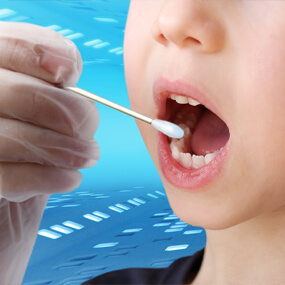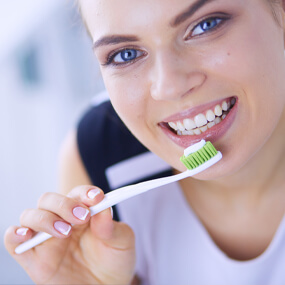Foods and Beverages That Will Stain Your Teeth

Bright white smiles improve your appearance, instill you with confidence, and help you make great first impressions. Surveys have shown that whiter smiles influence how people perceive us, and many people surveyed believe that a great-looking smile is essential to career success. Maintaining a white smile is not necessarily easy because many of the foods and beverages you love are undermining that color.
How Teeth Are Discolored
Your diet is not the only thing that can discolor your teeth. There are three core types of discoloration: age-related, intrinsic, and extrinsic. Intrinsic tooth discoloration is generally not food-related. It happens because the enamel erodes, which reveals the dentin underneath, or because the dentin darkens and thus becomes visible through the enamel. Age-related discoloration is essentially inevitable intrinsic discoloration. Your enamel wears and dentin darkens as a natural aspect of getting older. Extrinsic discoloration is external staining of the tooth enamel. This is what happens when you drink coffee, wine, and soda, and among smokers, nicotine and tar are by far the leading cause of extrinsic discoloration.
The Worst Foods and Beverages for White Teeth
- Black coffee – All coffee can stain your teeth, but black coffee is particularly strong. Milk and cream help to diminish the effect. Many people brush their teeth after breakfast but will then grab a coffee on the way to work. Teeth are porous. They absorb the liquids you drink to a certain degree, which is how coffee stains. Even if you only drink one or two cups of coffee a day, your teeth will become discolored over time.
- Tea – Tea can be just as bad as coffee due to the tannins it contains. As a general rule, the darker the tea, the more powerful the staining action, and milk can help offset that some just as it can with coffee. Dark-colored teas like Earl Grey are notably stronger in this regard. You should opt for green, white, and herbal teas, and green tea is notable in that it is good for overall oral health due to the antioxidants it contains.
- Red wine – Not only is the heart healthiness of red wine vastly overstated, but red wine is bad for the color of your teeth as well. Red wine not only has a dark color but is loaded with acids, which makes it very effective as a staining agent. The next time you drink some red wine, smile in a mirror, and see what your teeth look like. Red wine does, however, have some health benefits associated with it, and if you want to enjoy a glass, you can minimize the bad effects by rinsing vigorously with water after you finish.
- Carbonated beverages – Carbonated beverages are bad for your health in general. They can also undermine your oral health because acids wear tooth enamel and sugars contribute to plaque. Common ingredients include phosphoric and citrus acids that are quite strong, and it is these acids, along with the carbonation, that makes these drinks so effective at staining your teeth. The darker the beverage, the deeper the staining. Seltzer is the healthiest option when it comes to sodas and generally does not stain, and if you want to treat yourself with a cola on occasion, you should sip it through a straw in order to protect your teeth.
- Fruit juices – While fruit is good for you, this is not necessarily true with fruit juices. As is the case with many drinks, the darker the juice, the more powerful the staining action. So, while orange juice can certainly stain your teeth, juices like cranberry and grape are the ones you really have to be careful with. These juices are not just dark but contain natural pigments that essentially dye your teeth. They also contain acids, which wear the enamel and make any staining that much more effective. Light juices like apple may be the best option among fruit juices since the lighter color can actually counteract some staining.
- Sports drinks – Sports drinks may not be carbonated or contain any actual fruit juice, but that does not mean they are good for your teeth. Even the sugar-free options are loaded with acids that wear your enamel and help the artificial food coloring stain your teeth. Water is always a better option when working out.
- Popsicles – Ever notice what sucking on a popsicle does to your tongue? That discoloration is happening to your teeth as well. Not all popsicles are created equal. Some are lighter in color and not heavy on sugars and acids, but those that are dark and loaded with sugars and acids can really do a number on your teeth.
- Candies – Candies, in general, are not good for your oral health. This is especially true for candies that you suck on or that cling to your teeth after chewing them. The acids and sugar can assault your teeth for long periods. As a rule of thumb, if a candy or sweet can discolor your tongue, then it can stain your teeth.
- Blueberries – While the term superfood is overused and more marketing than reality, blueberries are an excellent addition to any diet. They are loaded with nutrients and antioxidants. Blueberries aid digestion, and research has linked them to improvements in blood pressure, cholesterol, and cognitive function. Unfortunately, they also stain your teeth, and they tend to get stuck in the teeth, which exacerbates the issue. When you do eat them, be sure to rinse your mouth vigorously with water afterward.
- Beets – Beets are like blueberries in that they are excellent for your overall health but terrible when it comes to keeping your teeth white. If you have ever cooked with beets, then you know exactly what your hands look like after handling them. Another rule of thumb is that if a food item can stain your cutting board, it can stain your teeth. Rinsing with water may not be enough in this case. Chewing sugar-free gum to promote saliva production can help offset the staining. You may also want to brush or use an oral rinse, but you should wait at least 30 minutes before doing so in order to avoid spreading and rubbing in the acid.
- Tomato sauce – Tomatoes—and tomato sauce in particular—are up there with blueberries and beets. When it comes to keeping your teeth white and bright, there really is no good tomato sauce. No matter the style or brand or whether you make it or buy it premade, it is going to stain your teeth over time. When you do enjoy a meal that features tomato sauce, you can help to mitigate the staining by having a salad as the first course and choosing side vegetables like broccoli, which form a protective coating on your teeth.
- Balsamic vinegar – When you have that salad, you may want to skip balsamic vinegar as a dressing. While it is often praised as the healthy alternative to ranch dressing and the like, it acts as a powerful staining agent. It is worth mentioning that lettuce is like broccoli in that it protects your teeth. Just be careful when using it, and aim to pair it with foods that coat your teeth, neutralize acids and counteract the staining.
- Soy sauce – It is not just dark beverages you have to be careful with. Any dark liquid that you use as a condiment or even as an ingredient can stain your teeth. Another rule of thumb is that if a liquid can stain your carpet or your shirt, then it can stain your teeth. When you do eat Asian cuisine, just take it light on the soy sauce to minimize the effect, and when you are finished, be sure to rinse your mouth with water.
- Curry – Curry is a prominent dish in Indian cuisine and has a well-earned reputation for yellowing teeth. Curry has an intense color that will stain your hands, clothes, cutting board, and more. As with beets, simply rinsing with water may not be enough to offset the effects, so you may want to take other measures.
Oral Health Tips to Keep Your Teeth White
There are a number of strategies you can use to help keep your teeth bright and white. Some of these were touched on above, and you will find them consolidated in the advice that follows. Be mindful that this advice assumes a foundation of brushing and flossing your teeth twice a day.
- Sip water – Staying hydrated throughout the day is great for your oral health. It also washes away acids, sugars, and starches and promotes saliva production, which does the same. Drinking water with your meal can help to offset tooth-staining foods as you eat them, and while it may seem strange to sip water in between sips of coffee and red wine, it can really make a difference in how much those liquids affect you.
- Protect your teeth after meals and snacks – It is recommended that you brush and floss once in the morning and again before you go to bed. Using proper technique, you can floss as often as you like, but dentists generally advise against brushing several or more times a day because it can wear down your tooth enamel. Rinsing vigorously with water is an option. Rinsing vigorously with a therapeutic oral rinse is also an option, but you should limit the use of mouthwashes to twice a day. Another effective habit is chewing sugar-free gum, and if you choose a product with xylitol, it will even inhibit the formation of plaque on your teeth!
- Wait 30 minutes before brushing – If you choose to brush after a meal, you should wait 30 minutes before doing so. This gives your saliva a chance to wash the acids away. Brushing too soon can actually help the acid attack your enamel.
- Swallow promptly – When you treat yourself to beverages that stain your teeth, sip, and swallow. Do not swish the liquid or otherwise let it linger. This advice is a bit trickier with food since food should always be chewed well, but avoid holding teeth-staining foods in your mouth any longer than necessary.
- Use a straw – Better yet, when you drink teeth-staining beverages, sip them through a straw. Doing so basically eliminates the risk of your teeth getting stained because the teeth are never touched. There are even straws on the market specifically designed for the high temperatures of drinks like coffee and tea.
- Eat cheese – Cheese is an excellent addition to any meal or snack because it is loaded with calcium and helps to neutralize any acids that you are also eating. In addition, the cheese fills in the micropores in your teeth, which makes it much more difficult for beverages and other food items to stain them.
- Emphasize fibrous foods in your diet – Fibrous foods help to promote saliva production, and that added saliva helps to offset the acids and food-staining agents you eat. Good options include broccoli, brussels sprouts, potatoes, and spinach.
- Limit your intake – You do not have to omit the foods you love, but you should be aware of the items that stain your teeth. Limit how much you eat them. Strive to complement them with appropriate foods, and seek out alternatives. Apples, cauliflower, grapefruit, and melon are all good options to mix into your diet as alternatives to food items that stain teeth.
- Avoid tobacco – Cigarettes and other tobacco products are obviously bad for your health. But be mindful that even occasional use can really stain your teeth as well as make your gums more prone to infections.
- Regular dental checkups – See your dentist every six months, even when your teeth and gums feel and look fine. A professional cleaning biannually goes a long way toward keeping your smile bright and white. You can also discuss in-office teeth whitening with your dentist as well as any products that you may want to use.
Keep Your Teeth Sparkling White
Did you know that teeth whitening is the most common cosmetic dental treatment? Everyone wants a beautiful white smile, and often, brushing alone is not enough to maintain it. If you want whiter teeth, Jeffrey D. Clark, DDS, can improve the color of your teeth through regular checkups, professional in-office and take-home teeth whitening, and even porcelain veneers for stains that cannot be undone. Call Scottsdale Cosmetic Dentistry Excellence at 480 585 1853 to schedule your appointment.




